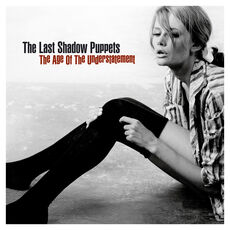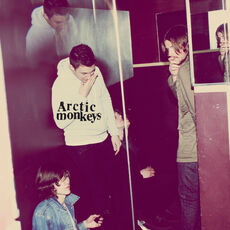“It’s better to burn out than to fade away”. Though Neil Young may have regretted penning this lyric from ‘Hey Hey My My’ ever since it was referenced in Kurt Cobain’s suicide note in 1994, these words epitomize the world of rock. This is a genre that goes up in flames only to be reborn. Good bands will either fade into obscurity, stagnate and then die all too sign, or break up only to create something even worse. However, age is becoming much more appealing. In 2022, the Arctic Monkeys has now been going for 16 years and are still working as hard as ever. Since replacing Andy Nicholson with Nick O’Malley in their early years, the band hasn’t changed a bit. By their first anniversary, The Times had already dubbed them “Bigger than the Beatles”—which is saying something. After breaking a bunch of records (including the fastest-selling debut album in the UK), winning a multitude of awards and writing a slew of riffs that have made their way into rock’s hall of fame, there’s no doubt this band has reclaimed a previously neglected throne.
When The Libertines disbanded in 2004 after just two studio albums (Up the Bracket in 2001 and The Libertines in 2004), they left the English rock scene orphaned. With Whatever People Say I Am, That’s What I Am Not, in 2006, the Monkeys took the nation under their young wings. Before this point, the US was home to the giants of the genre: The White Stripes in Detroit, The Strokes in Brooklyn and The Black Keys in Akron. Where The Libertines were destructive, brazen and seemingly cursed, the Monkeys were clean, diligent and blessed by the gods, eventually stealing the stage that once belonged to Carl Barât. They made front-page news in the specialist press, not gossip magazines. They took their inspiration from John Cooper Clarke instead of William Blake. They sniffed out Oasis and The Jam rather than brown sugar and the Sex Pistols. They were miles away from London’s hype, happily nestled under the low, heavy clouds of Northern England.
Don’t Need Nobody
This story begins on Christmas Day of 2001, when Alex Turner and his neighbour Jamie Cook rip open their Christmas presents and each unwraps a guitar. They were barely 15 then, but they wasted no time in getting Andy Nicholson on bass and Matt Helders on drums, forming the Arctic Monkeys. Why the Arctic Monkeys you ask? Even Jamie doesn’t know the answer to that. He simply threw the name out when he arrived at rehearsal and no one thought anything of it, much less tried to figure out what it meant. Whilst other unknown bands often sell their demos for £3, Alex made a point of giving them away for free after their shows—a strategy that evidently paid off. The 18 tracks on Beneath the Boardwalk—limited edition—were exchanged between fans over the internet, extending the band’s reach beyond the outskirts of Sheffield before they even had time to notice. Their fan base grew quickly, and after performing on the Reading and Leeds indie stages, they played a sold-out show in the London Astoria to a mob of enthusiastic fans who eagerly screamed Turner’s lyrics back at him. Eventually, the Monkeys chose Laurence Bell’s Domino label, the only one that didn’t ask them to rework their songs.
Their first studio album was recorded in Chapel Studios in Lincolnshire, and it contains a string of tracks that are as perfect as they are hard-hitting. Frantic guitars, Turner’s juicy riffs, Helder’s unrestrained drums, long-winded lyrics and a thick accent – this is what defines the Arctic Monkeys. Their sound is a fresh take on the nonchalance of The Strokes ('Riot Van'), the lively energy of Franz Ferdinand ('Red Light Indicates Doors Are Secured') and the rough edge of The Libertines ('Mardy Bum'). Before long, the Monkeys were back with their second album, Favourite Worst Nightmare, which shot to number 1 in the UK charts and reached number 7 in the US. Just like that.
Alex Turner, the reluctant frontman
Despite their undeniable success, the Monkeys were an eyesore live. Turner once said: “I’d love to do more live shows but it’s just not the way I am. I can’t help it, it’s just the way it is”. The singer was so shy in the beginning that he initially let Glyn Jones take the stage in his stead. Often donning a simple T-shirt, baggy jeans and trainers with limp hair that dangled into his eyes, Alex Turner looked nothing like your typical rocker. As uncomfortable in front of a crowd as he was making headlines, Turner did the bare minimum on stage. Quiet and disjointed, the kid was polite, shy, and as prim and proper as your local library. He’s a man of the written word, not the spoken, and that stands out in the British music scene. The mythical and decadent concept of Albion doesn’t appeal to him. Instead, he writes about his daily life as a working-class Englishman in gloomy Sheffield, sung in an accent similar to that of Jarvis Cocker, who, just forty years ago, formed the band Pulp. References to the girls, the fights, the cops, the prostitutes and the grim day trips create a tangible sense of boredom. An outdated view, some might say.
It's outside the band that the Arctic Monkeys frontman really proves himself, both as a solo musician and in a duo. His transformation began with the Last Shadow Puppets, formed with Miles Kane from The Rascals (whom Alex had met on tour). This collaboration with Kane would extend into the Arctic Monkeys’ discography, with the Merseyside musician playing the guitar on the track ‘505’. This was the era of tracksuits, hair gel and keeping it casual. With The Age of Understatement (2007), Alex and the rest of the Last Shadow Puppets dive into the kinetic pop of the sixties—Scott Walker (Jackie), the Beatles and Gainsbourg’s Melody Nelson period. The result is light and airy. Everything You’ve Come to Expect wasn’t released until eight years later after Alex had completed his other priorities: Humbug with the Monkeys and the Submarine soundtrack with Richard Ayoade. It’s not the first time Turner has worked with Ayoade, with the British comedian and filmmaker having directed the Arctic Monkeys’ first live album in 2007 at the Manchester Apollo. With Submarine, Ayoade offers Turner the space to explore his romanticism (the legacy of the Smiths, whom he discovered later in life), his shoegazian voice and stripped-down mid tempo ballads. Set in rural Wales, the film follows the life of Oliver Tate as he struggles to understand his parents’ rocky relationship and his prepubescent sexual desire for his girlfriend. The protagonist possesses a charming frankness that Alex Turner seems to reflect in his updated appearance. There’s no substance without form, and Turner now finds eloquence in his clothes as well as his words, swapping his baggy jackets for leather and a slick quiff. Mancunians Liam and Noel Gallagher—who never agree on anything—aren’t keen on his new look. It seems the public isn’t either, and they seem particularly disgruntled with his new Californian accent. Yes, Californian. No doubt that the Queens Of The Stone Age are the source of this American influence. In his quest to become a man, Alex has undergone a kind of transformation, altering the very essence of the Monkeys in the process.
The Last Shadow Puppets - Les Cactus (Official Video)
TLSPVEVOAmerican Exile
The Queens Of The Stone Age founder fell in love with the Arctic Monkeys two years earlier at a concert in Houston and set out to put them on the right track. He invited them to Joshua Tree, in the Californian desert, a whole world away from their homes in Britain. In his studio, Rancho de la Luna, Josh Homme organised the Desert Sessions. This musical collective series had seen a whole host of rockers—including PJ Harvey—contribute to the collaboration, high on psychedelics underneath the stars. Homme worked with the Arctic Monkeys on their album Humbug, however, with its dark and intuitive sound wrapped up in ten tracks, this record is confusing. The fault undoubtedly lies with the fact that the band has taken inspiration from Homme, Cave and Morricone without truly making the sound their own. After their failed American conquest, the Monkeys went back to basics. They headed to LA with James Ford to write some buttery melodies garnished with a few 'shalalalas', which eventually lead to the release of Suck It and See and its beautifully simple cover (which was frequently censored in the US, due to a misunderstanding surrounding the meaning of the title). The band’s formula had changed, with the guitar taking a backseat behind the heavy bass and intense drums. The result? Critics called it lazy, bland even.
With the eclectic AM (named in honour of Velvet’s VU from 1985), the quartet of nearly-30-year-olds finally proved they still had a lot to offer. Behind the flashy suits and Gucci shoes, the Monkeys were playing in another league. Their love for rap inspired them to combine their heavier rock with production inspired by 90s Dr. Dre (‘Arabella’), soft grooves (‘Why’d You Only Call Me When You’re High’), and velvety or classy ballads (‘Mad Sounds’ / ‘No. 1 Party Anthem’). Of course, they also took the opportunity to show off their knack for creating incredible riffs (‘R U Mine?’, ‘Do I Wanna Know’). Alex’s voice has truly blossomed here, perfectly supported by Helders’ and O’Maley’s backing vocals. The length of track titles is cut down, with the band instead opting for shorter, text-style names. High praise came from John Cooper Clarke, who praised their interpretation of his poem 'I Wanna Be Yours'. Lasting just 45 minutes, AM is a true epiphany.
“I just wanted to be one of the Strokes”. From the very start of their 2018 album, Tranquility Base Hotel & Casino, (which opens with ‘Star Treatment’), Turner lays his cards on the table. Five years have passed, and the world’s most adored quartet is in its thirties, donning shoulder-length hair and old-school suede jackets (as well as some dubious facial hair). On this sixth album, Turner reveals himself to be a soulman. Every syllable is perfectly polished, and there’s clear influence from Marvin Gaye as well as Cameron Avery’s solo album Ripe Dreams, Pipe Dreams. Helders brings up the rear, allowing the keyboard to take centre stage. Alex composed these tracks at home, on the Steinway his manager gave him. The guitar was no longer nourishing his creativity. On the piano, he deepens his fascination with Gainsbourg, François de Roubaix (American Sports), Morricone, Kubrick, and the suspense of Italian Giallo. Turner also inserts some less obvious scientific-futuristic song titles in the middle of the track list (‘Science Fiction’, ‘The World’s First Ever Monster Truck Front Flip’), a concept which is further supported by the futuristic album cover.
For The Car, The Monkeys once again enlist the capable hands of James Ellis Ford, who has worked with them on their entire discography since Favourite Worst Nightmare (2007) and The Last Shadow Puppet’s Understatement (2008). This newest album sees the maestro’s meticulous production in full flow, where the guitar is pushed back into the spotlight (‘The Car’), and soul (‘Big Ideas’) and funk flavours (‘Jet Skis On The Moat’, with its wah-wah) are deftly mixed together. Matt Helder’s drums, which had been ultra present on the first albums, are unsurprisingly more discreet. Forget the big riffs of the past — luxuriant orchestrations are what’s at play here. Superb.










